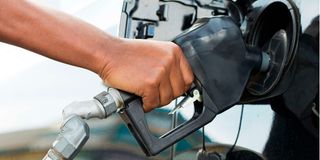Are fuel economy claims ever true?

Why is my car's actual fuel consumption different from the figures given in the vehicle's handbook for "urban cycle" and "highway". HK
It is most unlikely that any user anywhere in the world will achieve the precise figures quoted by manufacturers. They are an indication of the potential fuel return in optimum conditions (of road surface, ambient temperature, altitude etc). The given figure will never be exact – but it will be a meaningful indicator of the “relative” economy between different makes and models.
Assuming a car is in generally good order, fuel consumption differences of 50% can be caused by driving style alone. Other important influences include:
Road surface: Any irregularity in the road surface absorbs energy and, therefore, increases fuel consumption. The very, very best roads in Kenya are not smooth, and even those that have just been recarpeted would be signposted as "distorted road surface" by Euro standards.
Altitude: The Euro tests are conducted at sea level, where the oxygen-rich atmosphere allows the most economical jetting and timing settings and delivers maximum power/efficiency.
Kenya's ambient motoring altitude is between 5,000 and 7,000 ft, causing a power drop of between 20% and 30%, and requiring jetting and/or timing adjustments to ensure smooth engine running and response but with a fuel efficiency penalty.
Temperature: For optimum fuel efficiency, within general ambients the lower the temperature the higher the humidity the better. In Nairobi, both temperature and humidity are markedly "worse" than Euro test conditions; in Mombasa, the humidity is positive, but the temperature is even more negative.
Tuning: There are a number of settings that can be changed to improve fuel consumption (eg more advanced timing, higher tyre presures) but most have detrimental side effects on engine response or long-term wear-and-tear.
Other: There are other more obscure factors that can have quite measurable influence under some circumstances - such as whether you drive with the windows open or closed (aerodynamics), whether an air conditioner is used (power drain), the condition of the battery (recharging load), the integrity of the exhaust system (restrictions or lack of back-pressure), and numerous aspects of the running gear (binding brakes, tight bearings, wheel alignment etc.) The Euro figures are established when everything is optimal.
Age: The Euro tests are conducted on brand-new cars. Over years of use, cars gradually lose power and fuel consumption efficiency.





